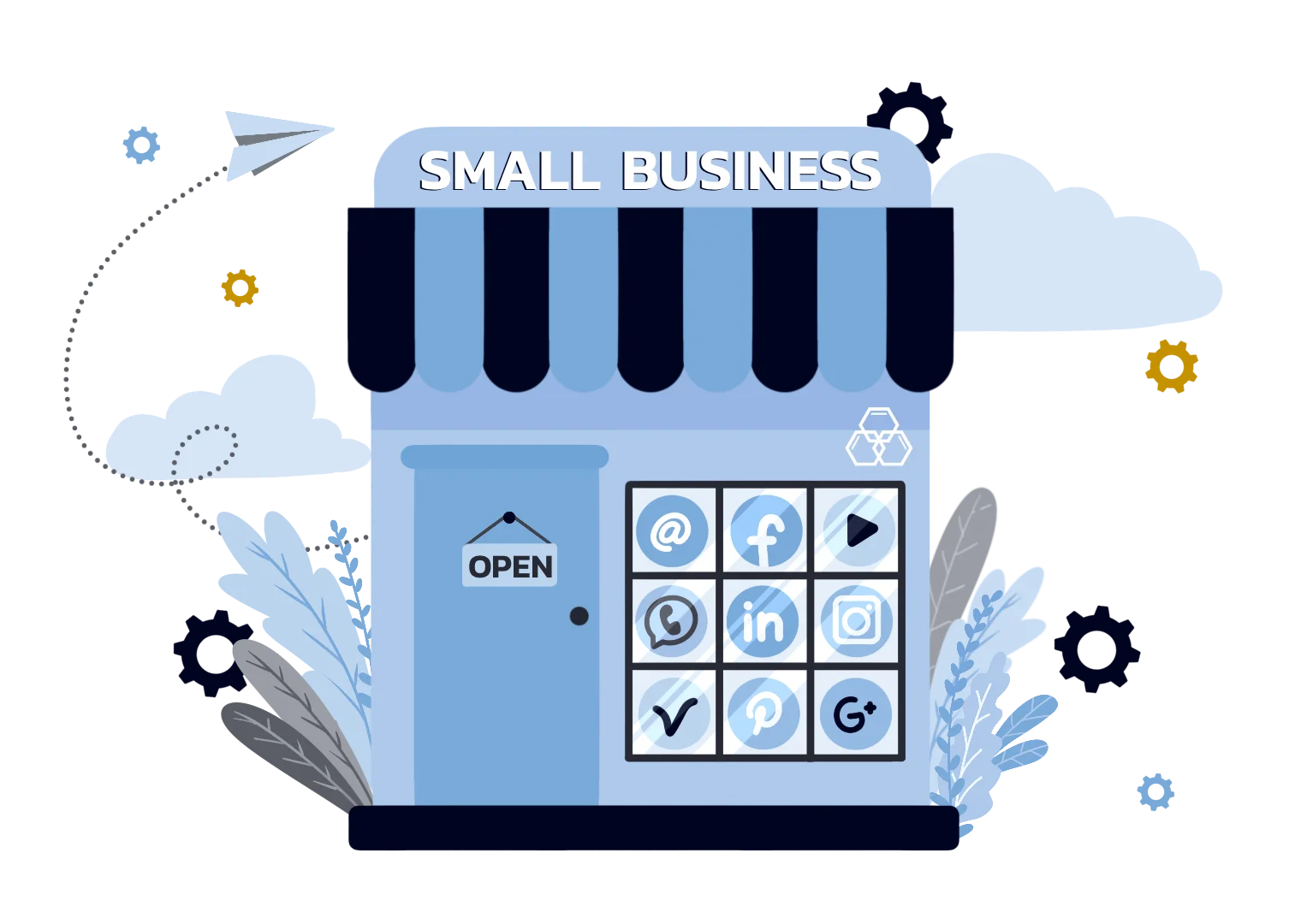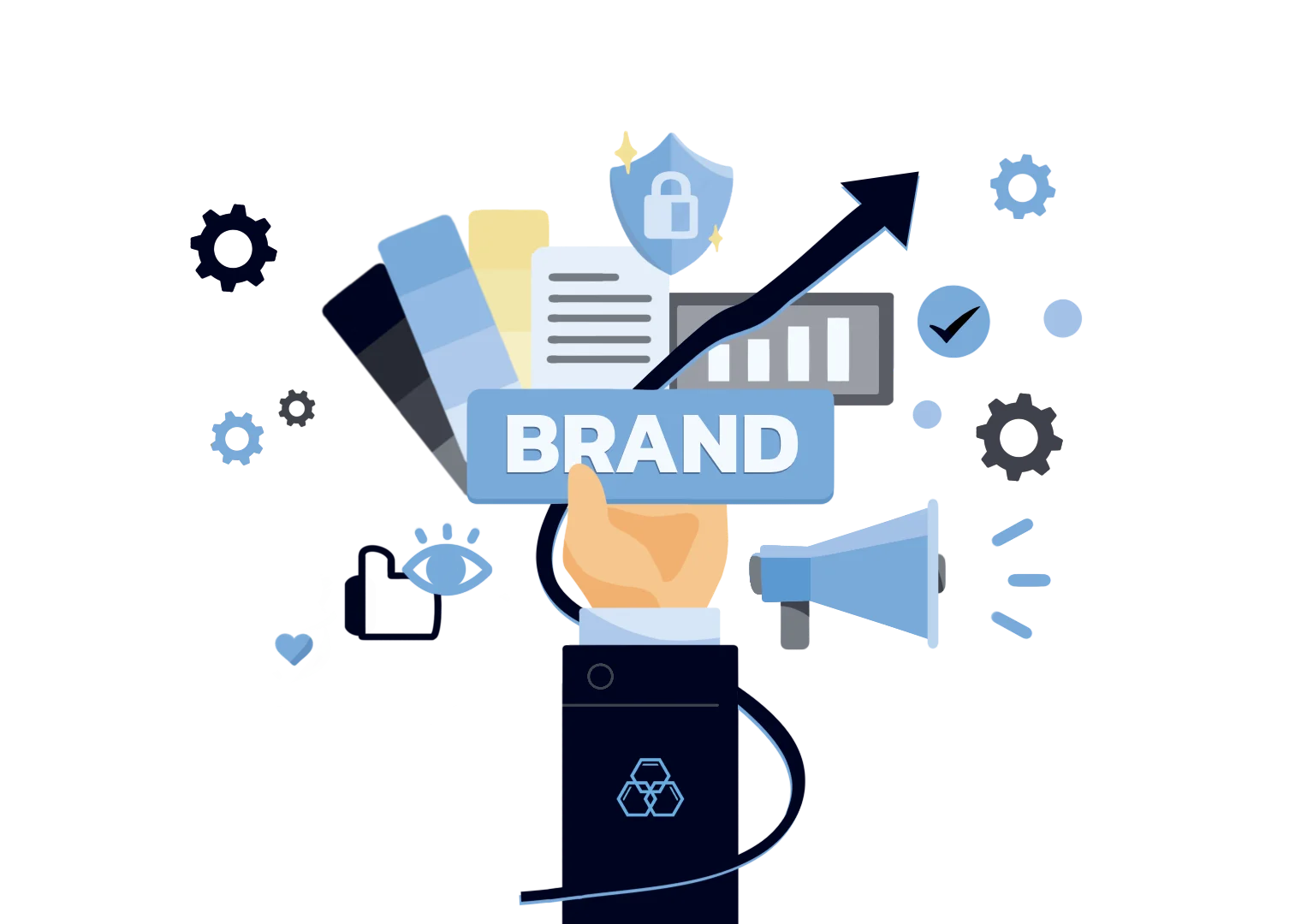Just as a Jenga requires careful balance as it grows taller, a brand's strength demands that you look back to ensure it won't fall. As brands grow, overlooking their foundational elements can lead to unexpected collapses. It's not just about past successes but ensuring ongoing alignment with evolving goals for continued success.
But brand audits can be challenging, and tedious. You might not know what to look for or how to gain insights from you data. Which is why leading brands often give these tasks to branding and marketing agencies like Evolv, which saves time and gives them focus on improving their products.
If you want to look back at your brand's journey, adapt to a change, or improve your brand, this guide will provide everything you need to know about brand auditing.
Let's get started!
What is a Brand Audit?
A brand audit is a thorough assessment on the internal and external branding aspects; it delves into a brand's present state and market standing. It looks into the brand's multiple facets, including the brand identity, ensuring it resonates with its intended message and values.
The audit also evaluates how the brand is perceived in the market, measuring its equity and influence. It dissects the brand's communication strategies, to see if they effectively reach and engage the target audience.
Moreover, a brand audit conducts a competitive analysis, benchmarking the brand against its rivals to identify strengths and areas of improvement.
Why is Conducting a Successful Brand Audit Important?
Understanding Brand Position
It delves deep into brand perception, consistency, and alignment with business goals. Through brand audit, we know:
What is Good
The audit identifies what the brand excels at, highlighting its unique selling points and areas where it outperforms competitor brands. Recognizing these strengths enables businesses to leverage them for a competitive edge further.
What is Bad
Businesses can proactively address vulnerabilities by pinpointing areas where the brand falls short or faces challenges. Whether it's inconsistent messaging, outdated branding elements, or gaps in customer experience, recognizing weaknesses is the first step toward improvement.

What can we Improve
Beyond strengths and weaknesses, a brand audit also sheds light on areas with potential for enhancement. This could involve refining marketing plans, optimizing brand messaging, or revitalizing visual identity to resonate better with target audiences.
Informing Strategic Decisions
Businesses can use the findings from a brand audit to create targeted marketing strategies and initiatives. Understanding customer perceptions and preferences helps to adapt their messaging effectively to make it resonate and be relevant to the target audience.
Brand audit ensure companies innovate and differentiate themselves.
Ultimately, a brand audit empowers businesses to make informed decisions, optimize their marketing efforts, and strengthen their brand's position in the marketplace.
Enhancing Brand Equity and Value
A brand audit helps businesses understand areas where their brand excels and areas that require improvement. A comprehensive and effective brand audit helps you strengthen the brand's value proposition, ensuring that it offers unique benefits that resonate with consumers and differentiate it from other brands in the crowded marketplace.
Additionally, enhancing brand equity fosters trust and improve customer loyalty, making them more likely to choose the brand over others.
An brand audit guides businesses in refining their brand's identity, messaging, and overall brand positioning for sustained growth and success.
Ensuring Brand Consistency and Cohesion
A brand audit looks into the brand communication and messaging and ensures that the brand values and identity are communicated to the target audience, consistently and effectively.
Moreover, a brand audit reinforces brand integrity, enhances customer trust, and creates a cohesive brand experience across all platforms and interactions.
When Should You Do a Brand Audit?

1. Periodic Reviews
There must be regular reviews, at least twice a year, on your brand's performance and perception to ensure it remains aligned with market trends and consumer expectations.
Routine brand audits proactively identify subtle shifts in your brand's perception, which helps you address them before they affect your brand negatively, sustaining relevance from your target customers.

2. Major Business Changes
During any significant changes in a company, such as mergers, acquisitions, or changing business strategies, the perception of the brand may be impacted.
Conducting an audit during these times is necessary to ensure the brand narrative remains consistent, relevant, and supportive of the new direction or structure.

3. Declining Performance
A decline in sales, brand engagement, or customer loyalty might indicate that something needs improvement.
In such situations, conducting a brand audit identifies the underlying causes. This could be anything from changes in the market to inconsistencies within the brand itself. Identifying the root cause early helps you take timely and informed action to address the issue before it worsens.

4. New Leadership or Management
When new leaders take over an organization, they often bring fresh energy and innovative ideas. During such transitions, it's essential to evaluate the current status of the brand and its relevance in the market.
Conducting a brand audit in these transformative phases has two benefits: it reinforces the brand's core values for consistency. It also ensures that its foundational elements remain unchanged even through brand refresh or rebranding, while also opening up potential growth opportunities.
Additionally, by remaining adaptable, the brand can respond to changes in the market and consumer expectations, harmoniously balancing legacy and innovation.
5. Launching New Products or Services
When a brand introduces a new product or service, it becomes a reflection of the brand's identity and its commitment to its customers. It's crucial that any new offering aligns with the brand's core values and messaging.
To achieve this, companies must conduct an audit to ensure consistency in branding but also maximize the potential of each offering to enhance the brand's overall value proposition. By doing so, companies can reinforce consumer trust and loyalty.

6. Competitive Pressures
In a constantly changing market, it is crucial to stay ahead of competitors. Conducting an audit during competitive pressure helps identify a brand's unique strengths, potential vulnerabilities, and areas where differentiation can be further enhanced, ensuring a distinct market position.
7. Customer Feedback
Getting customer feedback is crucial for any brand as it provides valuable insights into how they are perceived and experienced by their customers. Incorporating feedback into the brand's audit process, helps your brand to align with customer expectations and preferences.
Taking this proactive approach strengthens the brand's perception as customer-centric and helps identify and resolve any potential pain points. In the end, addressing these insights can help the brand build stronger relationships with its audience, fostering increased loyalty and trust over the long term.
8 Steps to Conduct a Brand Audit Process

1. Define Objectives and Scope
When starting an audit, it's important to establish clear brand audit framework to help guide the process. Ask yourself what you hope to achieve through the audit. Are you looking to:
- Improve your brand reputation
- Asses company culture
- Increase brand visibility
- Social media presence
- Improve customer satisfaction
- Address competitive challenges
- Identify areas where you can improve your market position
Determining the scope of the audit is equally important. You need to decide what areas of your business you want to assess. This could include specific product lines, geographical markets where you operate, or a particular time frame you want to focus on.
By setting clear boundaries, you can ensure that your efforts are targeted and purposeful. This foundational step will provide the necessary direction for the rest of the audit process.

2. Gather Data
Before thoroughly analyzing a brand, gathering all the existing brand assets is essential. This includes all the marketing materials such as brochures, flyers, posters, social media graphics, and any other promotional content the brand has created. Moreover, you need to review the brand style guide to ensure consistency across all touchpoints.
After that are the brand performance which are measured in metrics like sales data such as conversions, website traffic, and community engagement from social media channels. Determining any patterns and spikes of increase and decrease of these metrics allows you to understand what campaigns and strategies that you may have done that might have caused it so.
Tools like Google Analytics, Ahrefs and other website analytics tools can help you gather these automatically and effeciently.
Apart from the brand assets, it's crucial to revisit past market studies to understand the market trends and customer behavior. Customer feedback and performance metrics are also critical in understanding the brand's current position. This preliminary phase offers a snapshot of the brand's current position and highlights areas that require closer inspection. Analyzing all the available data makes it easier to identify the strengths and weaknesses of the brand, which is essential in developing an effective brand strategy.

3. Stakeholder Interviews and Internal Analysis
To ensure that your brand is consistently represented and effectively communicated, engage with your internal stakeholders. These are the people who breathe life into the brand on a daily basis, including employees, management, and brand custodians.
You can capture diverse perspectives on the brand's strengths, challenges, and opportunities by conducting structured interviews with these stakeholders. This allows you to gain valuable insights into how your brand is perceived by those closest to it.
In addition to stakeholder interviews, review your internal brand management guidelines and documentation. This can help shed light on operational nuances and potential alignment gaps that may be impacting your brand's overall effectiveness.
By identifying areas where your internal branding processes can be improved, you ensure your brand is consistently represented across all touchpoints and communications channels.
4. External Analysis
If you want your brand to stand out from the crowd, clearly understanding the external landscape is essential. This includes analyzing the strategies of your competitors, researching the current target market environment, and identifying any emerging trends that could impact your brand.
By doing so, you can better understand where your brand stands in relation to your competitors. This can help you identify potential differentiation points that can set your brand apart and areas that may require reinforcement or innovation to stay relevant and competitive.

5. Brand Identity and Communication Evaluation
To truly understand a brand's visual identity, examine its external branding such as logos, color palettes, typography, and associated visual assets. This thorough examination is not just about the brand's aesthetics but also about understanding how these elements reflect the brand's values and whether they consistently convey the desired narrative across various platforms.
In addition to visuals, the effectiveness of a brand's messaging and taglines is crucial. They must align with the brand's core values and communication style and whether the communication tone matches the brand's intended persona.
For instance, a brand that uses a formal tone might not appeal to younger audiences who prefer a more relaxed approach, while an overly playful tone could miss the mark with a mature and sophisticated audience.

6. Consumer Perception and Feedback
There are several effective methods that you can use if you are looking to gather consumer feedback and understand how your brand is perceived. One of the most traditional ways is to conduct customer surveys or focus groups to ask consumers about their thoughts and opinions directly like their thoughts on the brand or the sales process. This method allows you to collect insight from your customers' perspective on your brand's strengths and weaknesses.
Another option is to check online reviews and ratings on websites like Yelp, Google Reviews, and Amazon. The majority of customers often use these platforms to share their experiences with brands, products, and services. By analyzing these reviews and ratings, you can see what customers are saying about your brand and identify any areas for improvement.
In addition, you can use social media analytics tools to track mentions of your brand on social media platforms. These tools allow you to analyze the tone and context of social media conversations about your brand, providing you with a more nuanced understanding of public opinion. You can also leverage social media to engage with customers, respond to their comments and concerns, and build stronger relationships with your audience.
7. Synthesize Findings and Recommendations
To conclude an audit effectively, it is essential to connect all the insights gathered during the process. This is where the synthesis phase comes into play. The brand audit report must be a culmination of processing the data collected and turning it into actionable insights that can be used to drive business decisions.
To achieve this, it is necessary to look back on the overarching brand identity, identify patterns, and focus on crucial findings that could influence future branding strategy and marketing campaigns.
Once all the insights have been processed, the next step is developing informed strategic recommendations. These recommendations should offer a roadmap for optimizing brand potential, mitigating risks, and capitalizing on emerging opportunities. They should be actionable, specific, and tailored to the organization's needs.
FAQs
What are the 6 steps to conduct a brand audit?
Define objectives and scope. Gather internal and external data. Analyze core brand foundations and identity. Audit external customer perception. Evaluate all brand touchpoints and competitors. Synthesize findings into an actionable report with clear recommendations to bridge gaps and strengthen the brand.
What are the 7 elements of an audit report?
A complete report includes an executive summary, introduction with objectives, internal brand analysis, external customer and competitor analysis, touchpoint evaluation, a consolidated SWOT analysis, and a final section with prioritized recommendations and a strategic action roadmap for improvement.
What are the 5 pillars of brand strategy?
The five foundational pillars are brand purpose, market positioning, distinctive personality, the core customer promise, and a consistent visual and verbal identity. Together, they create a cohesive and differentiated brand that resonates with the target audience.
What is an audit checklist?
It is a practical tool to ensure thoroughness, listing all items to review like internal guidelines, visual assets, messaging, digital properties, and customer touchpoints. It systematizes data collection during the audit to guarantee no critical element is missed or overlooked.
What is the role of an audit manager?
The manager leads the entire audit process. They define the scope, orchestrate data collection, synthesize insights from the analysis, compile the final report, and present objective strategic recommendations to stakeholders, ensuring the audit delivers actionable findings.
How Does Evolv Conduct a Brand Audit for You?
We help clients gain a clear, unbiased picture of their brand's true market position, saving them time and internal conflict. Evolv delivers a consolidated roadmap based on data, not opinion, which gives you clarity on what to do next. This empowers leadership to make confident decisions, allocate resources effectively, and implement actionable steps that strengthen customer connection and drive growth.
If you're unsure how to audit your brand, reach us and let us know how the Evolv Branding and Marketing Team can help you. We are a team of experts with experience in building strong digital brands across various industries, from consumer goods to construction services.
Also, check out our blog page and stay updated on branding and marketing to build a strong brand and assert your place at the top of the competitive market.







